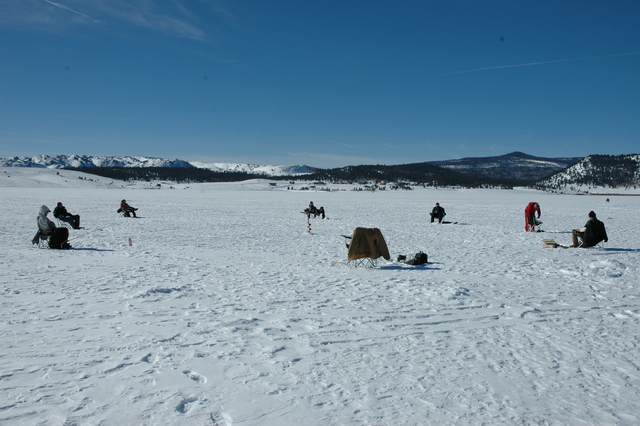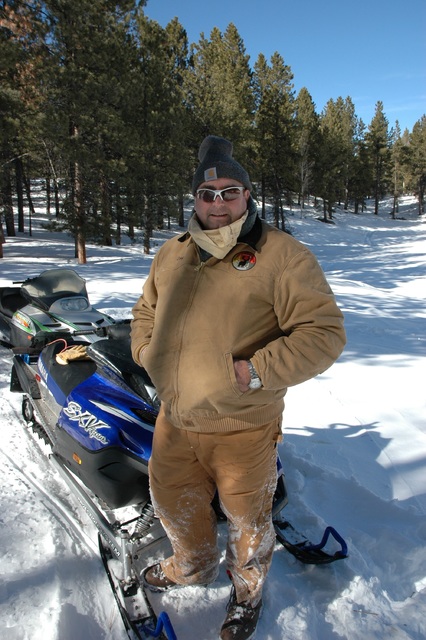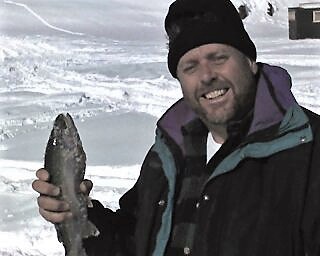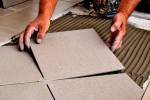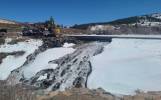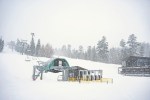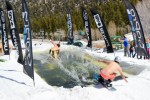Layered clothing, safety practices first key to ice fishing
Southern Nevada’s winters are generally short and relatively mild. Some days I pull out my wool coat in outfitter camo and slip it on just to remind myself what it looks like and to see if it still fits.
In communities farther north, however, things are different. With the Christmas season comes freezing temperatures accompanied by snow and ice, and the chance to do a little fishing through hard water. And though it’s true that a certain hot spot would have to freeze over before Lake Mead does, a three-hour drive will put you and your fishing rod on ice.
I have visited with many anglers about the sport of ice fishing and learned there tends to be two camps: those who have given it a try and those who won’t. While there are some who test the ice fishing waters and don’t enjoy it, most of us do. Probably because ice fishing is as much a social event as it is a fishing one.
In many ways, ice fishing is like sitting around a camp fire because anglers who know each other tend to drill their holes somewhat close together so they can visit while waiting for fish to bite. So you will often see clusters of anglers scattered over the ice. Sometimes that scattering is just a social thing, sometimes it reflects where the fish are biting, and often it is simply because a group of anglers always fishes in the same place, just because they always have.
Something else I have learned is anglers who don’t try ice fishing choose not to because they are concerned about being cold, afraid they will fall through the ice or worried they will need specialized equipment.
In today’s world, one doesn’t have to be cold when ice fishing. The key to staying warm is always found in wearing layers. Start with a good base layer, keeping in mind that you will be sedentary most of the time. Each of us has different requirements, so you will need to personalize your choice. My guess is you will already have what you need.
I begin by using a polypropylene liner sock covered with another sock made of merino wool, skipping the cotton variety. Then I add thermal underwear made of a wool-polypropylene mix. On my upper half, I add a long-sleeve shirt, preferably wool or a wool mix, followed by a fleece vest, then top everything off with insulated bib overalls and a good coat. For years, I used a scarf during cold weather, but this year I learned the benefits of a neck gaiter. And, of course, I keep my head covered.
Though I have been able to protect my feet by wearing a quality, waterproof hunting boot, you may choose to wear insulated Pac boots or something similar.
While there is no such thing as ice that is 100 percent safe, there are basic guidelines that will help you decide whether to venture out on the ice or stay on shore. For new, clear ice, the Minnesota Department of Natural Resources, which just happens to be in ice-fishing central, recommends the following: 2 inches or less, stay off; 4 inches, ice fishing and other activities on foot; 5 inches, snowmobiles or ATVs; 8-12 inches, car or pickup; and 12-15 inches a medium truck.
Walking on ice makes me nervous, so you won’t find me driving on it. Ever. Keep in mind that new, clear ice is stronger than “white ice.” Double the thickness recommendations when venturing on white ice. I always opt for the thickest ice I can find, and when it doubt, I don’t.
As for gear, your standard fishing rod, reel and tackle will work just fine. The only thing you will need that is specific to ice fishing is an ice auger for drilling a hole. These are available in manual and powered designs. I have used both, and though I prefer a motor-driven auger, both will work just fine. Be sure the blade is sharp enough to do the job.
Whatever you do, don’t forget to bring a comfortable camp chair. The ice can grow mighty hard after a while.
Something else to consider is the means for transporting your gear, chair, lunch and whatever else you choose to bring. A child’s sled can fill that need.
Freelance writer Doug Nielsen is a conservation educator for the Nevada Department of Wildlife. His “In the Outdoors” column, published Thursday in the Las Vegas Review-Journal, is not affiliated with or endorsed by the NDOW. Any opinions he states in his column are his own. He can be reached at intheoutdoorslv@gmail.com.
Calendar
Jan. 28: White Pine Rotary Ice Fishing Derby, Cave Lake State Park outside of Ely. More information: elynevada.net/events/icefishing.html.



